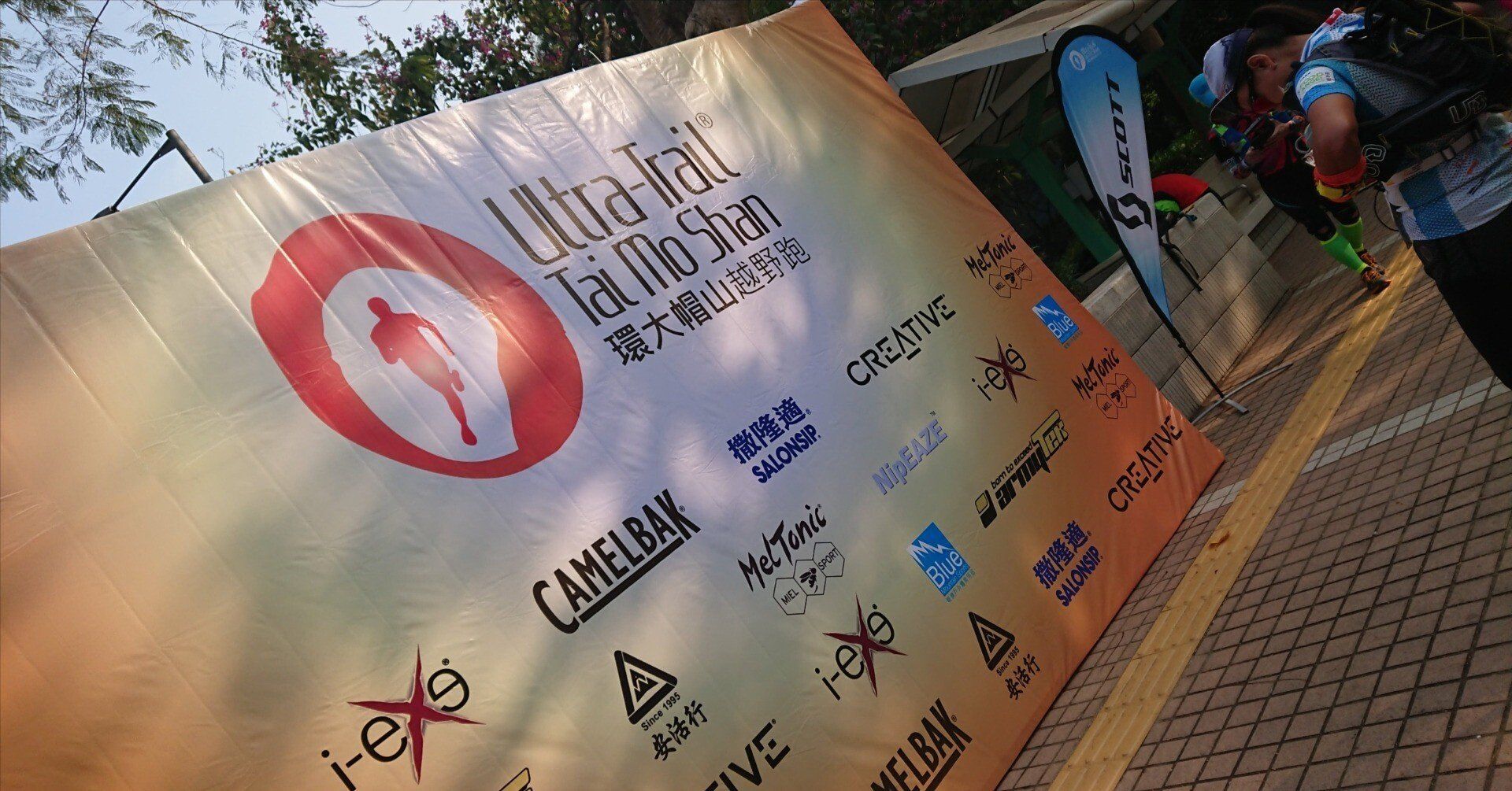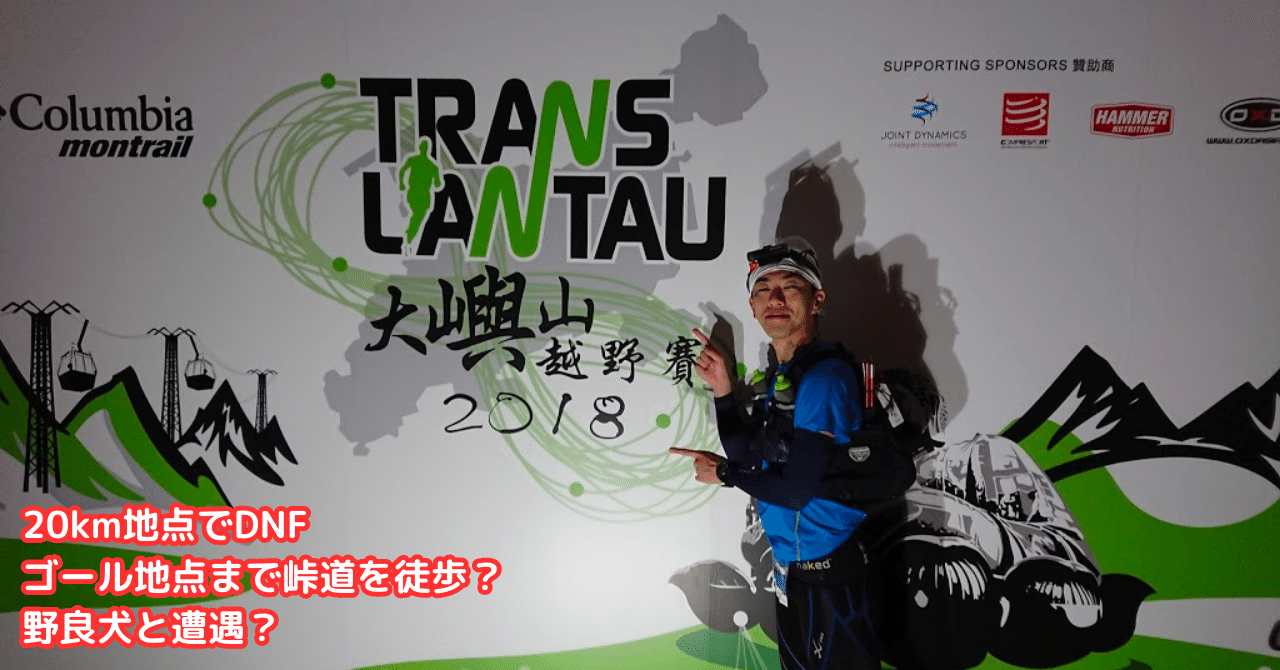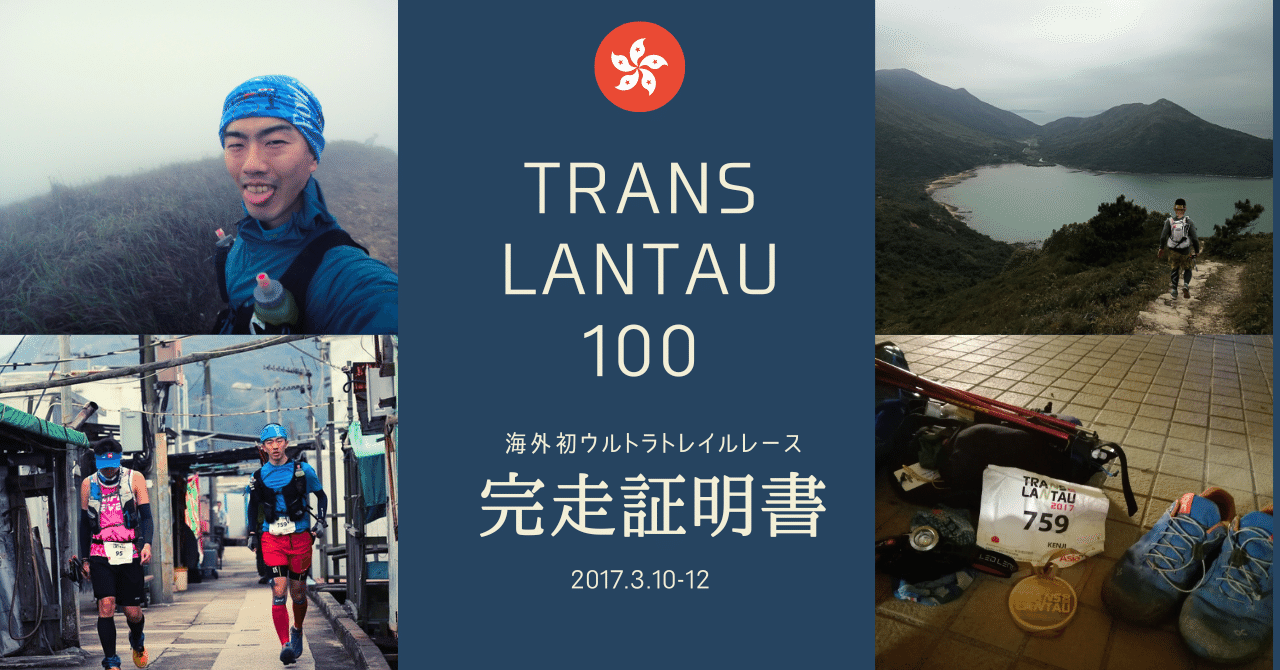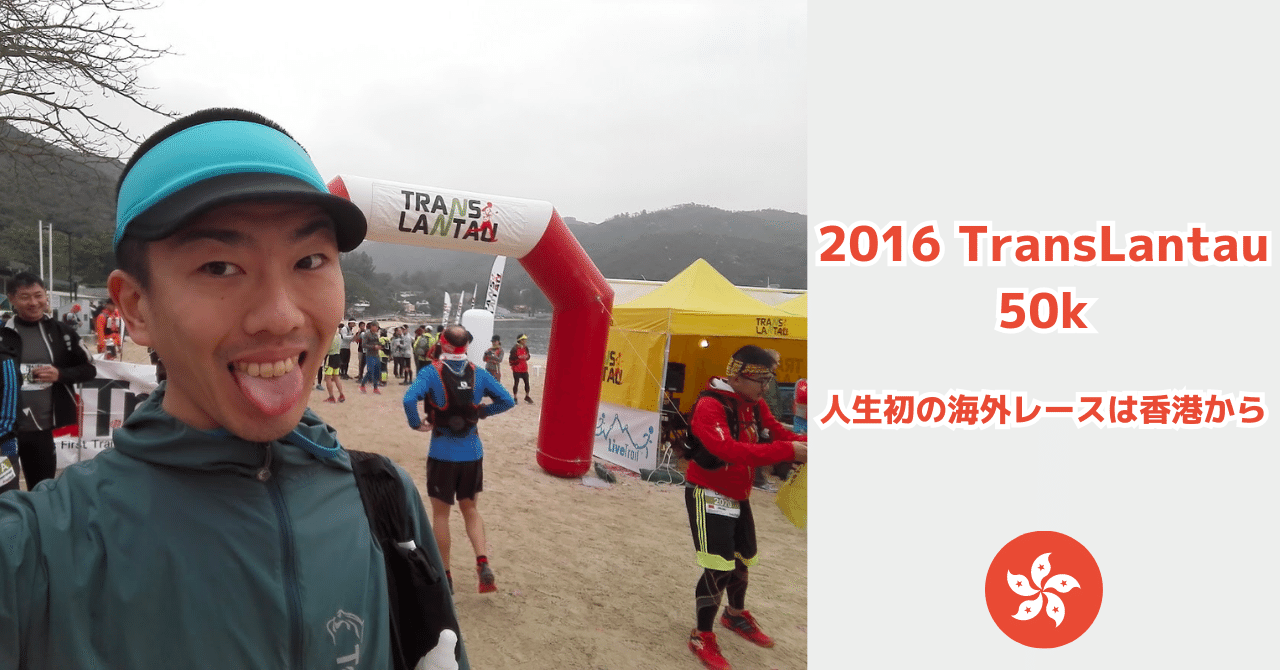Happy New Year! I look forward to working with you in the New Year!
Well, I have participated in the Ultra Trail Tai Mo Shan (環大帽山越野), a trail race in Hong Kong during the year-end and New Year holidays. This event has three categories: 100 miles, 115km, and 50km, and I participated in the 115km TTF (Tsuen Wan, Ta Shek Wu, Fo Tan).
Unfortunately, I DNFed at the 93km CP (Jiadouri Farm) due to illness. He took a nap at the 93-km CP, but because he took the nap in his race clothes, his body got cold and his physical condition worsened, forcing him to DNF.
I hope I can convey the atmosphere of Ultra Trail Tai Mo Shan, even though I only reached the 93km point.
Summary of my race (TTF 115km)
- Date and Time: December 30, 2017 16:00 - January 1, 2018 2:00 (34-hour time limit)
- Distance: 115km
- Accumulated elevation: 5382m
- Starting point: Tsuen King Circuit Playground, Tsuen Wan
To get to the starting point, Tsuen Kng Circuit Playgroud, you need to take a cab from MTR Tsuen Wan station (Tsuen Wan). There are many cabs parked in front of the station, but I used Uber to dispatch a car to take me there.
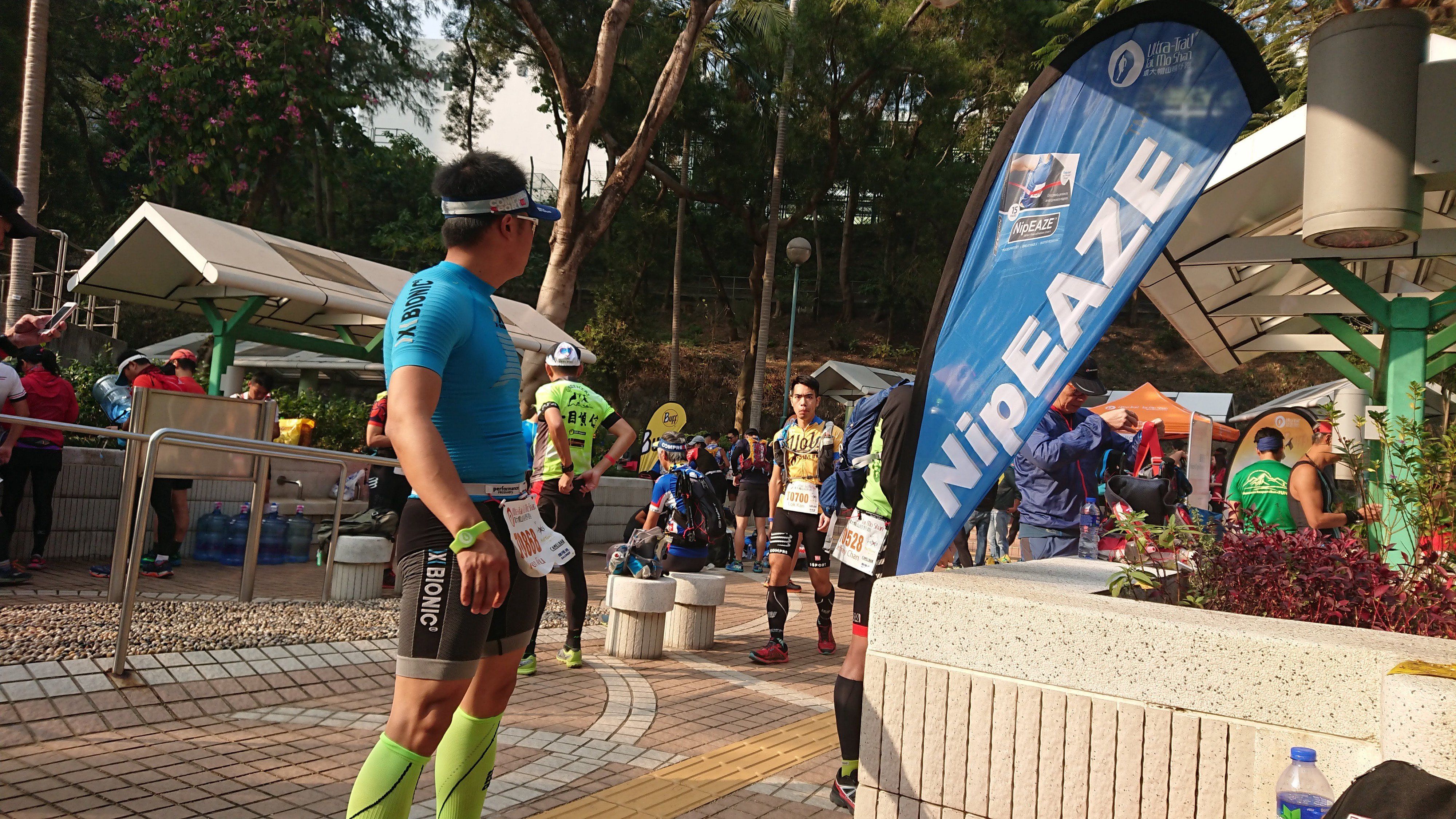
I arrived at the starting point 2 hours before the race started, and there was a high percentage of Japanese. You can see the national character here: ・・・・ There was also a Japanese runner there who I had eaten clay pot rice with the day before in Mong Kok. He is the same person I met at the Ultra Taiwan event two years ago (see related article below, Answer 4), and we have met again since then.
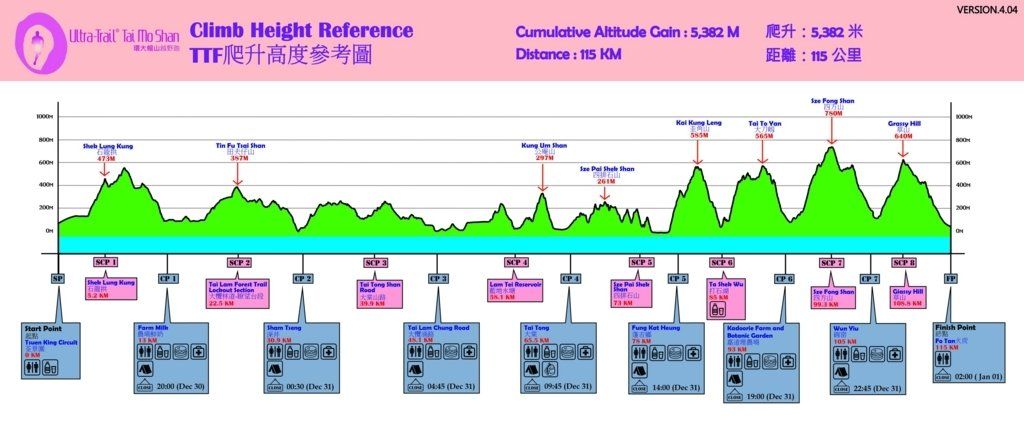
It was mostly road until CP4 (65km, Tai Tong). The signposts on the course say "forest road," but unlike Japanese forest roads, it is almost entirely made of concrete...
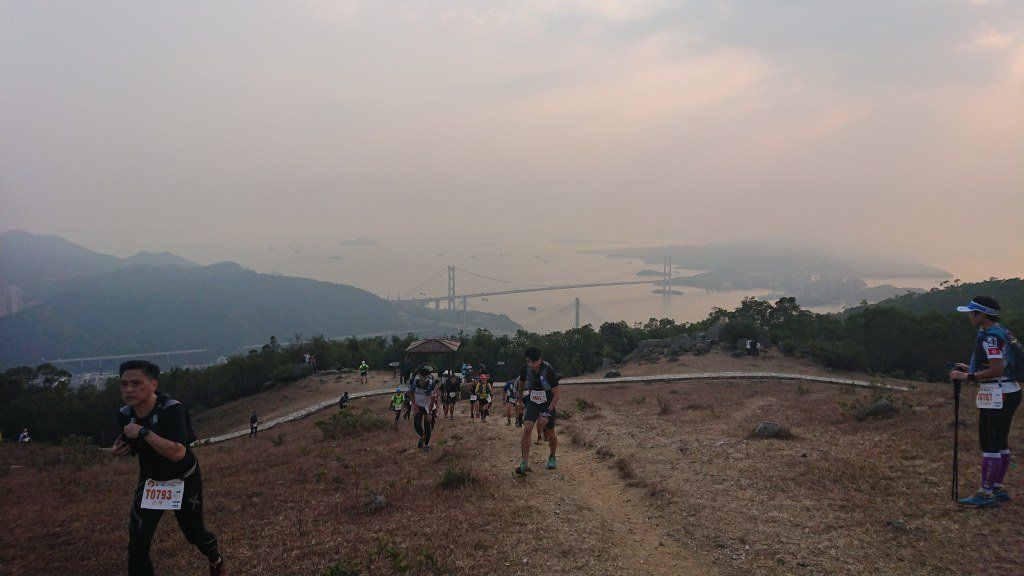
Also, the difference in elevation is not so much compared to the end of the course, so we can move forward smoothly; since the course starts at 4:00 p.m., it will soon become night, so the temperature will be cooler and we can move forward comfortably. The night view of Hong Kong from the top of the mountain was absolutely beautiful. It was kind of fun to roam around Hong Kong's upscale residential areas late at night (laughs).
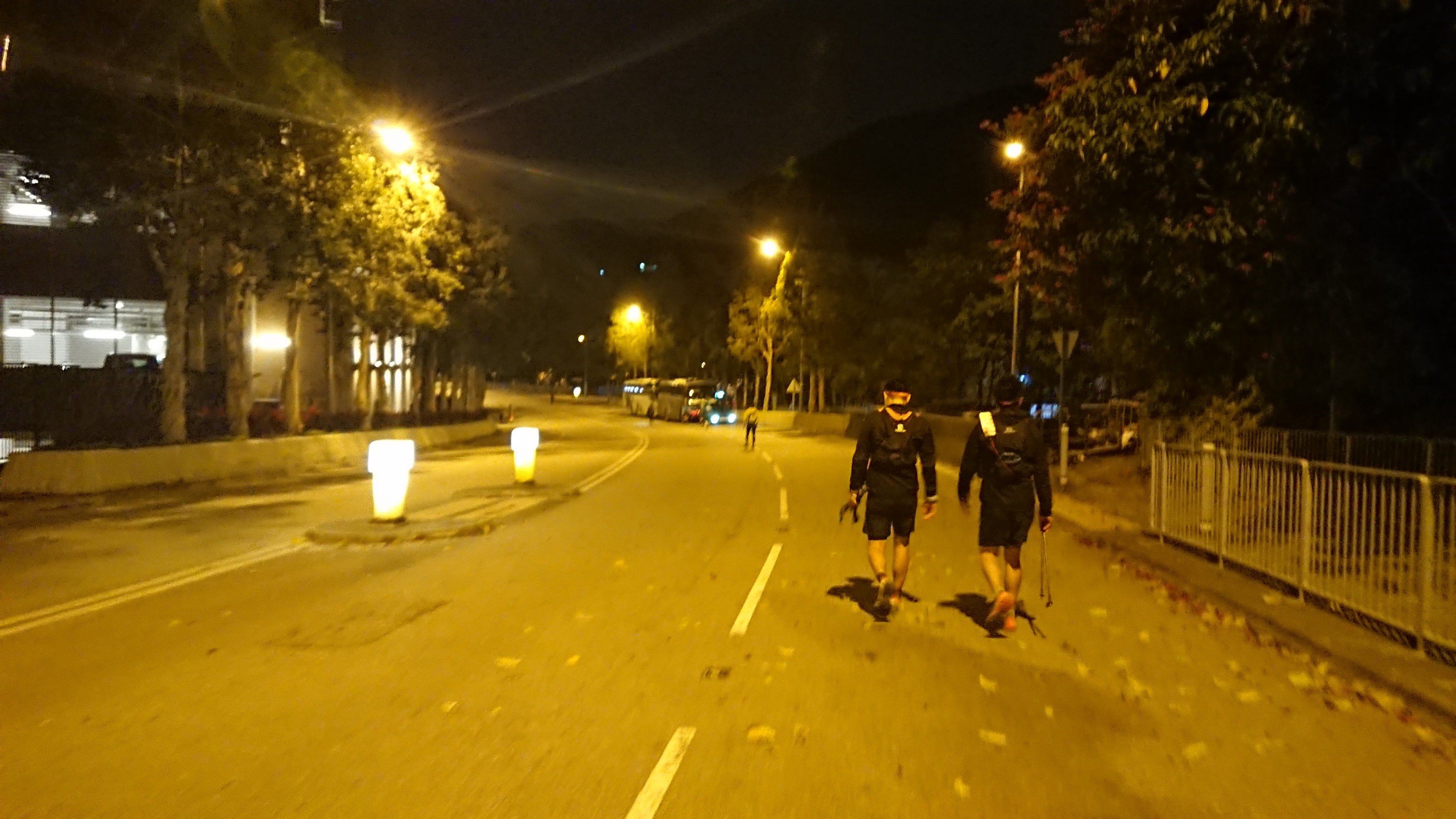
During the race, however, I dropped my salt fever supplement, a necessity in ultra races. Without it, I would not be able to replenish my electrolytes, and there was a possibility that I would collapse from heat stroke... Fortunately, the temperature was not so high at night, so I would be able to get through the race. I survived for the time being with a sports drink provided by the convention and a cup of noodle soup.
I arrived at CP4 (Tai Tong, 65km) more smoothly than I had expected. I was starting to feel a little sleepy, so I took a 30-minute nap here. We were able to pick up our drop bags here, so we put on warm clothes and an emergency blanket and took a nap. So far, so good. The drop bag contained a spare bottle of salt fever supplements, which was a big help.
After CP4, we started to hit the trail in earnest.
This is where the real hell began...
The elevation from CP4 to CP5 (Mt. Shihzangshi) is not so high, but the ups and downs are very steep. The descent was also technical, and the stairway was hellish. And the damage to the legs accumulated at once, and the legs became flat. It's so hard to get sick of it. 。。。。 The view of Shihpol Shihshan was really nice. It must be so beautiful at night.
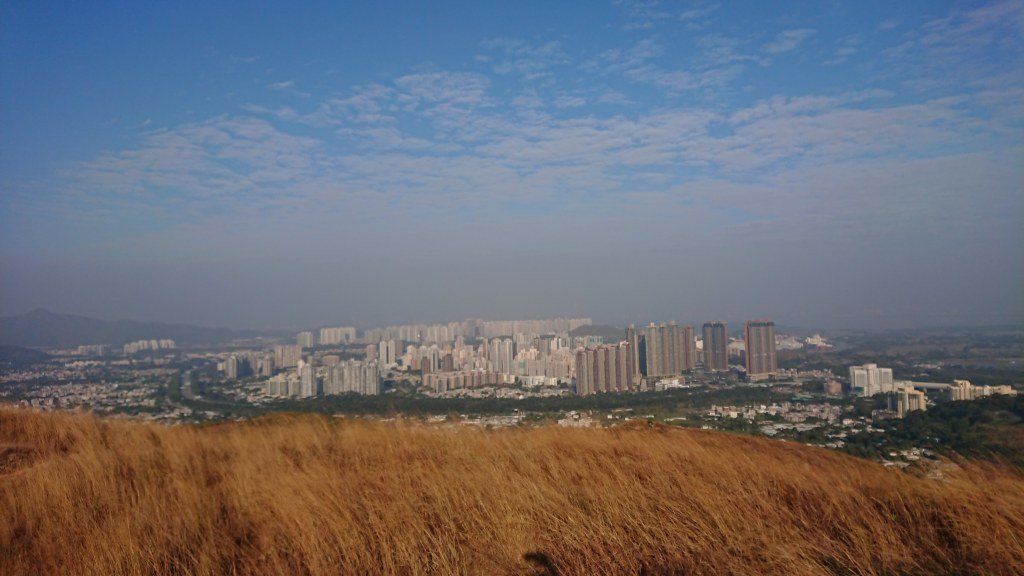
After climbing down Mt. Shih Pao Shih, we ran about 5km long road and arrived at CP5 (Fung Kat Heung). I was tired. While we were taking a break, Hiroaki Matsunaga, a professional trail runner who was competing in the 50km race, passed us in style.
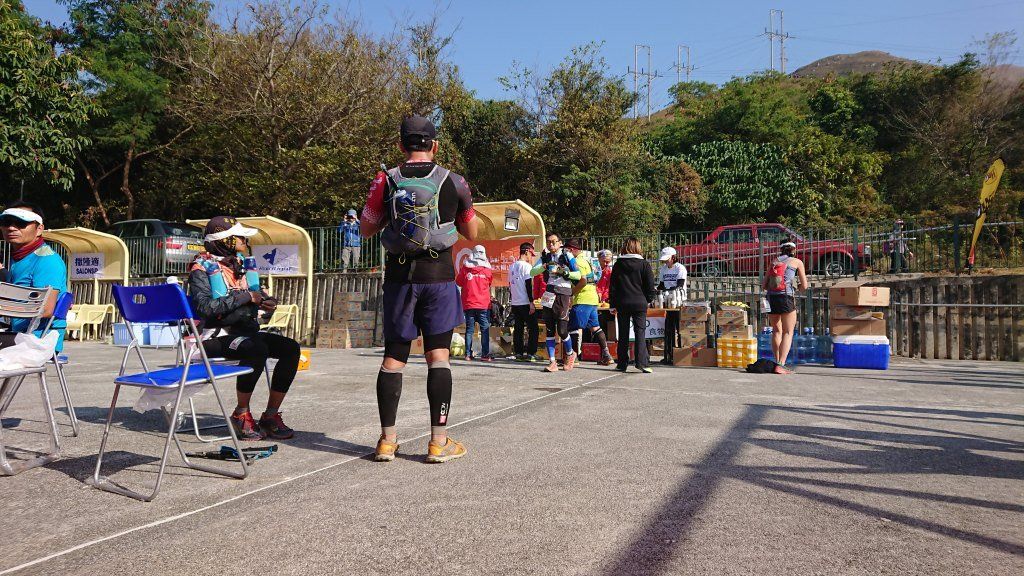
The 15km section from CP5 to CP6 (Chikungongling to Datongbiao) is a tough course...................................a mountain of about 600m, climbing up and down twice. And since it is the time of day when the temperature is at its highest, and there is nothing to block the sun like in the mountains of Japan, you will lose all your energy at once. 。。。。
Between Chihgongling and Datongbiao, there is a SCP, which only checks for passage, but for some reason, this is the only place where you can get a water supply. After entering this SCP, my body felt light-headed and I could not move for a while. We rested in the shade for about 30 minutes. During that time, I replenished water, MAGMA, Jomi here, and salt fever supplements all at once. At any rate, it looked like I could make a good start, so I headed up to Otoe.
The scenery is beautiful, but I don't have time to take any pictures with my camera. During the Daitou-da, the uphill, which is one of my favorites, became very difficult and I could not pick up the pace or get any energy at all. (Laughs) On top of that, the 50-km racers, who were still going strong, came from behind one after another. Since it was single track, I had to stop and give way every time, which was quite stressful....
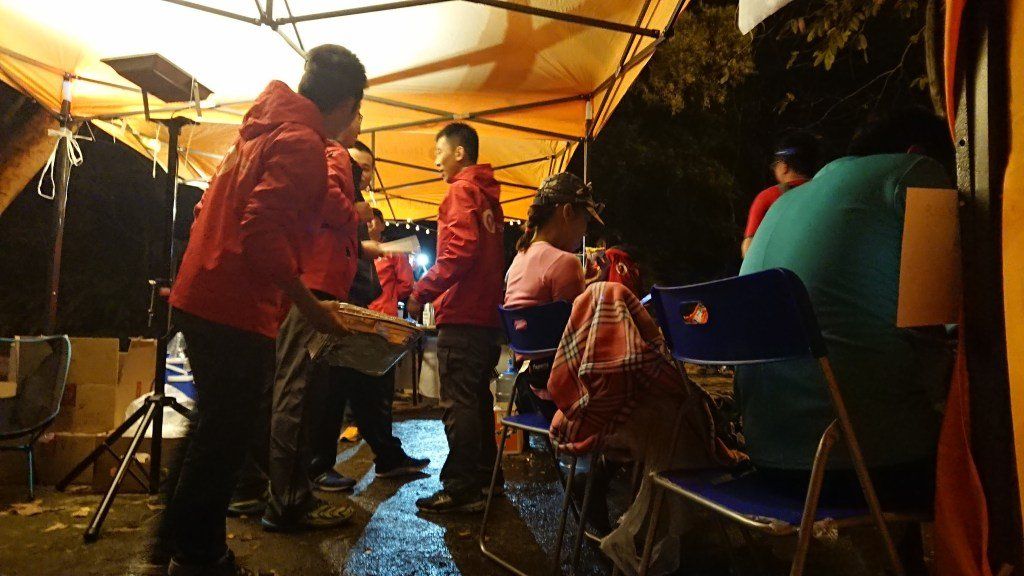
We arrived at CP6 (Kadori Farm), where we DNF'd, at around 17:10 on 12/31. We still had less than 2 hours to go before the barrier gate, but we decided to take a quick nap to regain our strength. I slept for about 30 minutes, but even though I was wrapped in a blanket, my body was cold from perspiration, and my condition worsened further. With 22 km to go, I could not muster the energy to climb up and down the 800 m and 700 m mountains, so I just told the aid staff "I will quit the race," and ended my 93 km journey.
After that, I had to take a cab by myself to a place called Fo Tan, where the finish line was located, to pick up my drop bag, but the Hong Kong aid staff, who were concerned about my poor health, arranged everything for me. Since the aid was deep in the mountains, we had to wait for about 30 minutes to get there, during which time we were given a few hot drinks (Chinese tea, miso soup, etc.) and an uncooked lunch box (probably left over for the staff).
Later, after the cab arrived, they were kind enough to accompany us to the finish line as a carpool, as if they cared about us. Normally, the athletes would have had to pay for the cab, but they were able to pay for the cab as well. This was very helpful.
Food and drinks served at the aid stations
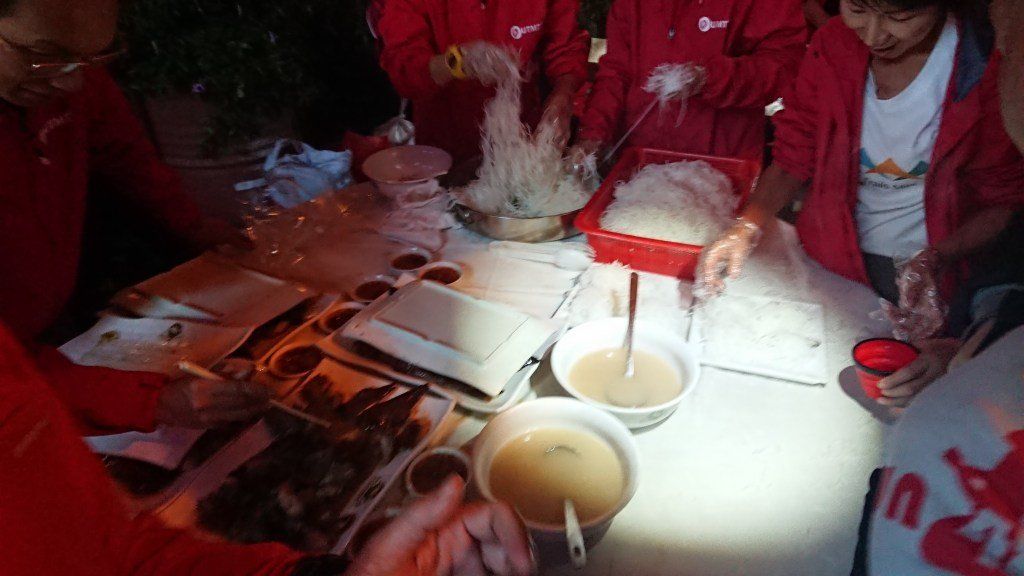
As this is a race in the Chinese region, ramen noodles (dezensai ichicho or homemade ramen) are served at the aids. Other foods served at the aid stations included peanut butter sandwiches, bananas, Chinese fried noodles, tea leaf eggs, dried fruits, nuts, chocolates, and more. It is rather substantial.
Drinks include water, sports drinks with Chinese herbs (Meltonic), black tea, Chinese tea, coffee, and cocoa. Some aids also serve cola, but I think there was only one. However, there are vending machines, convenience stores, and private stores on the course, so I heard that it is OK to get your own drinks, so I did so on two occasions.
As with other events, you need to bring your own cups and cups. You also need to bring a fork and chopsticks for eating ramen. Forks can be obtained at the convention registration desk.
Summary
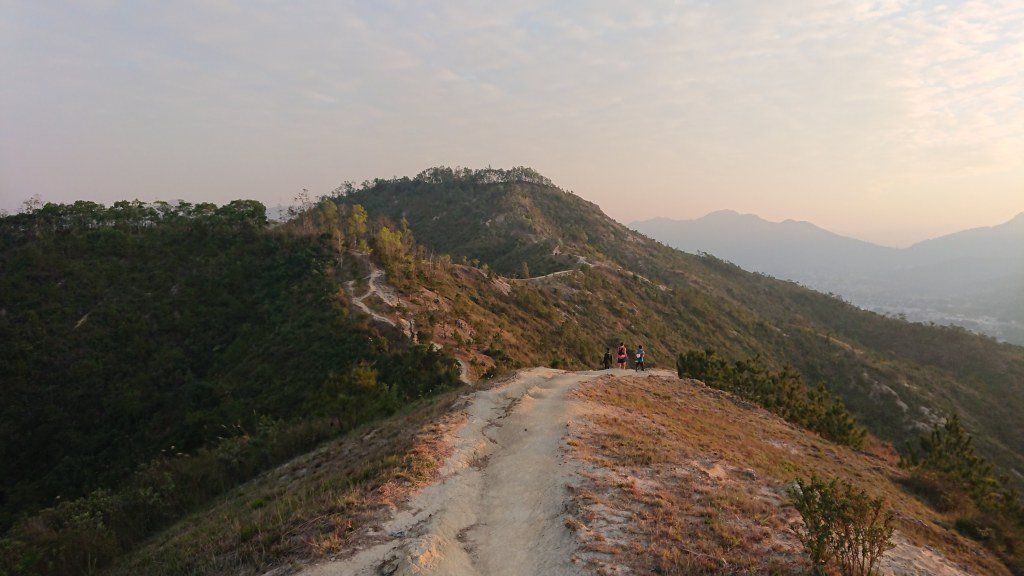
My personal result was a disappointing DNF at the 93km mark. However, I had run the Osaka Marathon a month earlier with a separated leg and a bum knee, so I honestly did not have confidence in my ability to finish the race even before the race began. However, I was surprised that I was able to run 93km even in this condition.
Also, running in the mountains overseas is a good stimulus. I tried to talk to them in Chinese, which I had just learned, and when they realized that I was Japanese, they would say in Japanese, "Good luck! Let's go for 115km! I am grateful for the dedicated help at the aid station where I DNF'd.
And, throughout the race, it was the same Japanese runners who gave me emotional support. It feels good to be able to speak casually in one's native language. The day after the race, I also enjoyed a New Year's visit and dim sum lunch with a young Japanese man I became friends with at the same inn.
Although I still have some issues to work on my running, this 5-day/4-night trip to Hong Kong was a good stimulus for me. I will be back in Hong Kong in March for the TransLantau 103km, so I will make adjustments for that.
Thank you for reading to the end. m(_ _)m
